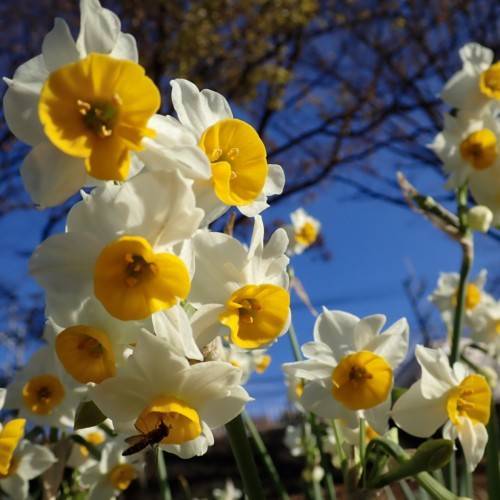
large-cupped daffodil
Narcissus 'Blues'
Cycle:
Perennial
Watering:
Average
Hardiness Zone:
3 - 8
Flowers:
Flowers In Spring
Sun:
Full sun,part shade
Leaf:
Yes
Growth Rate:
High
Maintenance:
Low
Drought Tolerant:
Yes
Care Level:
Medium
watering
Large-cupped daffodils prefer moist but not overly wet soil. Water immediately after planting to settle the roots and water on a weekly basis until the ground freezes. Water deeply twice a month during the growing season and once a month during the dormant season. Avoid wetting the foliage when watering.
sunlight
The large-cupped daffodil (Narcissus 'Blues') is an ideal variety for gardeners looking to add cheerful color to their outdoor living space. This plant thrives in full sun or partial shade, meaning it requires at least 4 to 5 hours of direct sunlight each day. If providing direct, successive sunlight is not feasible, the large-cupped daffodil should be placed in an area of the garden that receives partial sun for most of the day. This variety is perfectly suited to these conditions. The best time of day to provide sunlight is from morning until mid-afternoon. This will allow the petals to unfurl and absorb its energy from the sun, making the blooms look brighter and more vibrant.
pruning
For optimal growth and flowering of the large-cupped daffodil (Narcissus 'Blues'), pruning should be done annually shortly after flowering. This can be done by deadheading fading flowers, and cutting off old foliage at the base of the stem. Pruning should only consist of removing dead or dying parts, and no more than 1 third of a healthy stem should be removed at a time. Pruning can also help encourage healthy growth and the development of a strong root system. Additionally, foliage should not be cut completely to the ground as it can damage the flowers’ growth and flowering capability. Finally, pruning should be done in mid to late summer when the daffodil is dormant, and it should be done gently so as not to disturb the root system.
